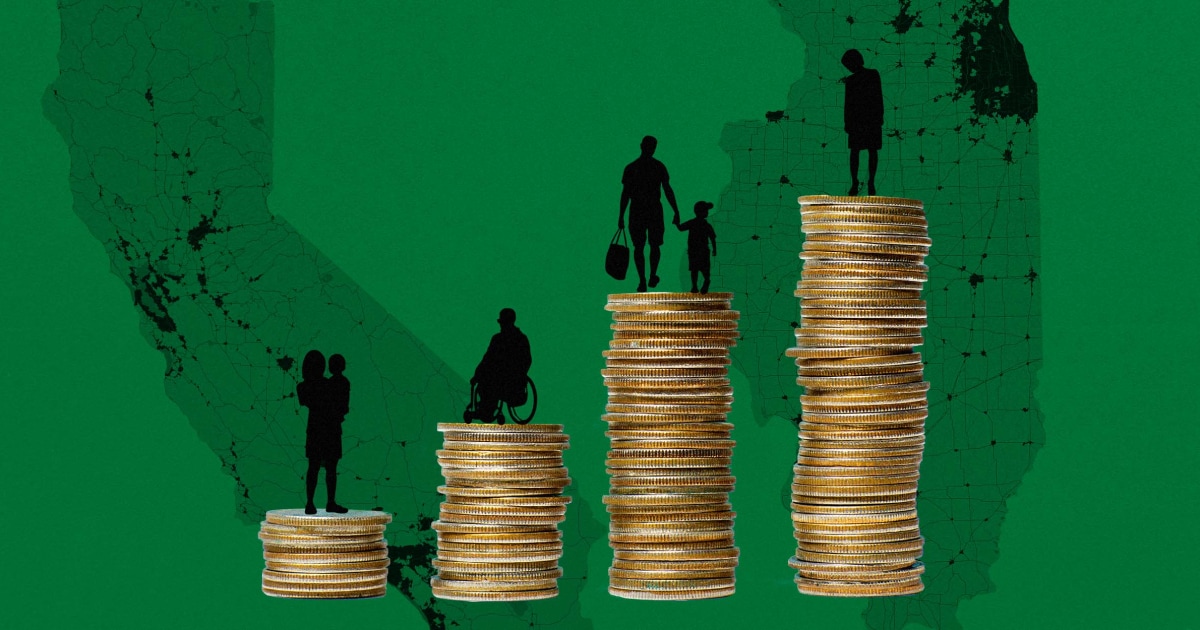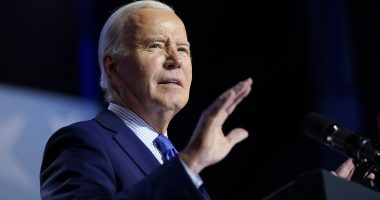
As millions of Americans continue to feel the financial fallout of the coronavirus pandemic, two of the country’s biggest cities are committing millions of dollars to help struggling families.
Los Angeles and Chicago are both rolling out guaranteed basic income pilot programs that will provide monthly payments to low-income residents for one year. L.A’s program, dubbed BIG:LEAP, will give 3,200 people $1,000 per month and Chicago’s initiative will provide 5,000 residents $500 a month.
Recipients for both pilots will be picked at random.
Applications for Los Angeles’ initiative closed Friday but Chicago is still hammering details for its program. Both are set to launch next year.
The programs will be the largest of their kind and build on momentum generated by smaller initiatives like the two-year pilot in Stockton, California, which was found to increase participants’ full-time employment and decrease anxiety and depression. Basic income programs have also been tried in Finland, Kenya, Brazil and several other countries.
About 40 other U.S. cities have considered or implemented similar efforts, according to Mayors for a Guaranteed Income, including Minneapolis, Denver, Newark, Pittsburgh, San Francisco, New Orleans and Compton, Calif.
In July, Los Angeles County supervisors approved a three-year pilot program for residents between the ages of 18 and 24, and California is also looking into the potential of launching a statewide initiative.
Can this work on a bigger scale?
While previous attempts at providing direct cash assistance payments have largely yielded positive results, economists question whether similar programs can be successfully replicated on a large scale.
“The [federal] child tax credit, as well as the stimulus, showed that there are some holes and some people get left out of these sort of large government programs,” said Stacia West, director for the Center for Guaranteed Income Research at the University of Pennsylvania and professor at the University of Tennessee.
“Part of what we’re looking at is what disbursement mechanism works best for specific populations and my feeling is that a one-size fits all approach is not going to work.”
The idea of giving direct cash assistance to low-income residents has been tossed around for generations by economists, legislators and community leaders, and gained significant momentum during the pandemic.
According to census data, 18.4 percent of Chicago residents experience poverty compared to 18 percent of Los Angeles residents, higher than the national average of 11 percent. The number of Americans living in poverty declined overall during the Covid pandemic due to the massive stimulus relief measures Congress enacted at the beginning of the crisis, the Census Bureau reported in September.
“We have so much need in this city,” said Abigail Marquez, general manager at the Community Investment for Families Department, the lead administrator for Los Angeles’ program.
Stockton test case
Even before Covid-19 prompted a federal stimulus, basic income drew national attention after 2020 presidential candidate Andrew Yang added the so-called Freedom Dividend, which would have provided $1,000 to every American adult for one year, to his platform.
“We know that the policy has to come at the federal level,” said former Stockton Mayor Michael Tubbs, who spearheaded his city’s program in 2019. “We also know that cities are laboratories of democracy and oftentimes, particularly in this hyperpolarized time we live in, mayors have the ability to break through the noise and pilot policies.”
Key findings from the first year of Stockton’s program showed that guaranteed income reduced income instability, helped recipients find full-time jobs and enhanced mental and overall well-being, according to a report released earlier this year.
“Having two of the three biggest cities in the country being so bold and have guaranteed income means so much,” Tubbs added. “It creates even more evidence and more people who are supportive of this idea.”
While Stockton’s program was funded by donors, both Chicago and Los Angeles are investing money from the cities’ budget for their initiatives. Chicago has committed $31 million for its program and L.A. will pay some $38 million, including $11 million that was cut from the Los Angeles Police budget after last summer’s uprisings following George Floyd’s death in Minneapolis.
Challenges to large-scale implementation
When translating to larger cities, economists say there are two main concerns that researchers will weigh: the impact of losing benefits, like Section 8 vouchers or SNAP benefits, and how the money will be dispersed to those who qualify.
In Los Angeles, administrators are asking public agencies to waive restrictions from public agencies in order to protect participants’ existing benefits, Marquez said.
“If you’re a single parent, for instance, it’s not clear what value these programs have beyond the social safety net programs that currently exist,” said Gary Painter, public policy expert at the University of Southern California. “At scale, we’re going to think hard about how this income source is treated by other programs and I have not heard that discussion writ large.”
Another potential challenge for larger cities is gaining and maintaining trust. Many individuals who are eligible for government programs are used to not being trusted, so there needs to be more of a person-centered approach not only with dispersing the money but tracking data, West said.
“Guaranteed income has to really separate itself from that paternalistic ‘you’re a number, you don’t matter, there’s something morally wrong with you’ and the internalized welfare stigma the individuals have,” she said.
While both Chicago and Los Angeles stand among a growing chorus of cities providing income assistance, the proposals did not come without pushback.
In Chicago, 20 members of the city’s Black caucus said the program should be cancelled and that funding should be diverted towards violence prevention and reparations for Black residents, the Chicago Tribune reported. Other legislators opposed the program because they felt that it would discourage residents from working.
“Classic economic models imply that if you have more money then you work less, but in the Stockton experiment it was the exact opposite. We saw them increase their labor force participation and more success in the labor market,” said Stephen Ross, an economic professor at the University of Connecticut. “It will be interesting to see if the larger pilots show the same thing.”
Alicia Victoria Lozano reported from Los Angeles and Safia Samee Ali reported from Chicago.
Source: | This article originally belongs to Nbcnews.com








